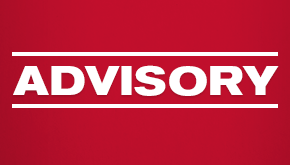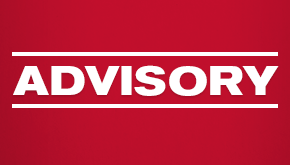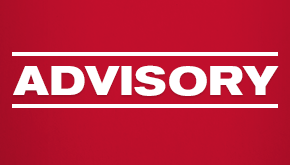For Your Benefit Newsletter, June 2020
IRS Provides COVID-19 Relief for Cafeteria Plans
In Notice 2020-29, the IRS provides increased flexibility to sponsors of cafeteria plans by permitting several midyear election changes without a showing by participants of a change in status or other regulatory basis for making an election change outside of the annual open enrollment period. In addition, the new IRS rules allow additional time to spend unused amounts remaining at the end of a grace period or plan year that ends in 2020.
Midyear Changes to Cafeteria Plan Elections
During 2020, an employer may permit prospective midyear election changes for health coverage, health flexible spending accounts (FSAs) and dependent care assistance plans without the employee substantiating any change in status, life event or other basis which is typically required to make a midyear election change. All changes must be prospective. No election to change coverage or salary deferrals retroactively is permitted.
An employer may implement one or more of the following permitted changes without implementing all of the available changes, as long as the permitted changes are made available on a nondiscriminatory basis in accordance with the existing cafeteria plan rules:
- A plan may allow an employee to (1) elect group health plan coverage if the employee previously declined coverage, (2) make an election to switch to a different coverage option, or (3) revoke coverage prospectively, provided the employee attests in writing that they are enrolled, or will immediately enroll, in other health coverage.
- A plan may allow an employee to revoke an election, make a new election, or decrease/increase an existing election regarding contributions to a health FSA.
- A plan may allow an employee to revoke an election, make a new election, or decrease/increase an existing election regarding contributions to a dependent care assistance plan.
The IRS guidance includes a sample attestation that an employer may use to satisfy the requirement that a participant electing to revoke group health plan coverage has other coverage or will immediately enroll in other coverage.
The relief during 2020 applies to both self-funded and fully insured group health plan coverage, and both regular health FSAs and limited-purpose (also referred to as HSA-compatible) FSAs. An employer may limit the midyear changes to ensure that the annual contributions will be no less than amounts already reimbursed or to allow only more favorable or increased benefit election changes. Moreover, the relief may be offered retroactively to Jan. 1, 2020, and prospectively through Dec. 31, 2020. If an employer elects to implement any of the above relief, the employer should inform all eligible employees of the specific relief available under the plan.
Extension of Claims Period
An employer may permit employees to apply unused amounts in a health FSA or dependent care assistance plan at the end of a grace period or plan year which ends in 2020 to permitted expenses incurred through Dec. 31, 2020. At this time, the extension does not carry into 2021. However, a plan may be amended at any time through Dec. 31, 2020, to allow a normal “carryover” feature, which has been increased to $550. The carryover feature would allow an employee to carry over unused amounts which remain after the 2020 plan year into the next plan year.
Plan Amendments
An amendment to implement the relief provided under IRS Notice 2020-29 may be adopted at any time on or before Dec. 31, 2021, to apply retroactively to any period back to Jan. 1, 2020.
Electronic Distribution of Retirement Plan Documents and Notices – No New Relief for Welfare Plans
The Department of Labor (DOL) recently released a Final Rule which allows ERISA-governed retirement plans to provide required disclosures electronically under two new safe harbor methods. The first method allows documents to be posted on a website, and the second method allows the documents to be provided directly through email.
Covered Individual
The regulations provide that the new disclosure method may be used for a “covered individual,” defined to include a participant, beneficiary or other individual entitled to a covered document who provides an electronic address, which includes an email or mobile phone number that can receive the disclosures by text. An employer email may be used automatically for those who are assigned an employer email as part of their job. This applies for only employees and email addresses assigned by the employer. An email address that is assigned by the plan administrator, or by the employer for nonemployees (such as a spouse or beneficiary) cannot be used. To continue using electronic disclosures following someone’s termination of employment, the employer would have to solicit a new email address at the time of termination.
Initial Notification
The employer or plan administrator must send an initial paper notice to covered individuals letting them know that covered documents will be provided electronically and describe the electronic location (i.e., internet location) and certain other information. When someone becomes a participant in the future, the initial notice must be provided to them. The employer or plan administrator should develop a process to distribute this initial notice for new participants and beneficiaries.
Notice of Internet Availability
For each covered document, the employer or plan administrator must provide a notice of internet availability to the email or mobile phone number provided by the covered individual. For certain disclosures, this requirement may be satisfied by sending an annual notice. For other disclosures, this notice of internet availability must be sent separately. The DOL rules contain specific content requirements for the notice of internet availability, including specific title and importance statements, identification of the documents being posted, the website or a hyperlink to the document, a statement that the individual may request a paper version or opt-out of electronic delivery, a cautionary statement about how long the document will be available on the website, and a telephone number for a plan representative.
The annual notice may cover summary plan descriptions and a document or information that must be furnished annually, rather than upon the occurrence of a particular event, and does not require action by the covered individual by a particular deadline. The DOL may authorize additional documents in the future that may be covered by the annual notice, and the IRS may allow notices required under the Internal Revenue Code to be disclosed through the annual notice.
Website Requirements
The DOL rule includes specific requirements for the website where the documents will be made available electronically, requiring the employer or plan administrator to ensure that: (1) the document is available on the website no later than the date it is required to be furnished under ERISA; (2) the document remains on the website at least until the date that is one year after the date the document is made available or, if later, is superseded by a subsequent version; (3) the document is presented in a manner calculated to be understood by the average plan participants and in a widely available format that is suitable to be read online and printed clearly on paper; (4) the document can be searched electronically by numbers, letters or words; and (5) the document is presented on the website in a widely available format that allows the document to be permanently retained in an electronic format that can be read online and printed clearly. The employer or plan administrator must take reasonable steps to ensure that the website protects the confidentiality of any personal information of any covered individual.
Right to Paper Copies and Opt-Out
A covered individual has the right to request a paper copy of a covered document without charge. Only one copy of any covered document must be provided free of charge. A covered individual may also globally opt out of electronic delivery, but may not opt out on a document-by-document basis. Also, the system used to provide notices of internet availability must include a feature that alerts the employer or plan administrator to an invalid or inoperable email or mobile phone number. If a new, operable email or mobile phone number may not be obtained, the employer or plan administrator must send paper disclosures to the covered individual.
Direct Disclosure through Email
The employer or plan administrator may also comply with an obligation to furnish a document by emailing the document directly to a covered individual who has been assigned an employer email or provided a personal email. Instead of sending the notice of internet availability, the employer or plan administrator may send an email that (1) includes the covered document in the body of the email or as an attachment; (2) includes a subject line that reads: “Disclosure About Your Retirement Plan”; (3) identifies the document, includes a statement of the right to a paper copy or to opt out of electronic delivery, and includes a telephone number for a plan representative; and (4) complies with the readability requirements applicable to the notice of internet availability. The attached or linked documents must be presented in a manner calculated to be understood by the average plan participants and in a widely available format that is suitable to be read online (and may be permanently retained in electronic format) and printed clearly on paper, and the document must be searchable electronically by numbers, letters or words. The employer or plan administrator must take reasonable steps to ensure that the website protects the confidentiality of any personal information of any covered individual receiving the direct emails. In addition, the right to paper copies and opt out must be provided.
Effective Date
The new rules are effective as of July 27, 2020, but employers and plan administrators may rely on them currently.
While these new rules may provide retirement plan sponsors with options to avoid mailing required disclosures to covered individuals or otherwise providing them through paper, several aspects of the new rules may require careful establishment of procedures to ensure a critical step in the process is not missed. Please contact our Employee Benefits and Executive Compensation attorneys for assistance or additional information as you begin the process of determining whether your organization can take advantage of the new rules.


































